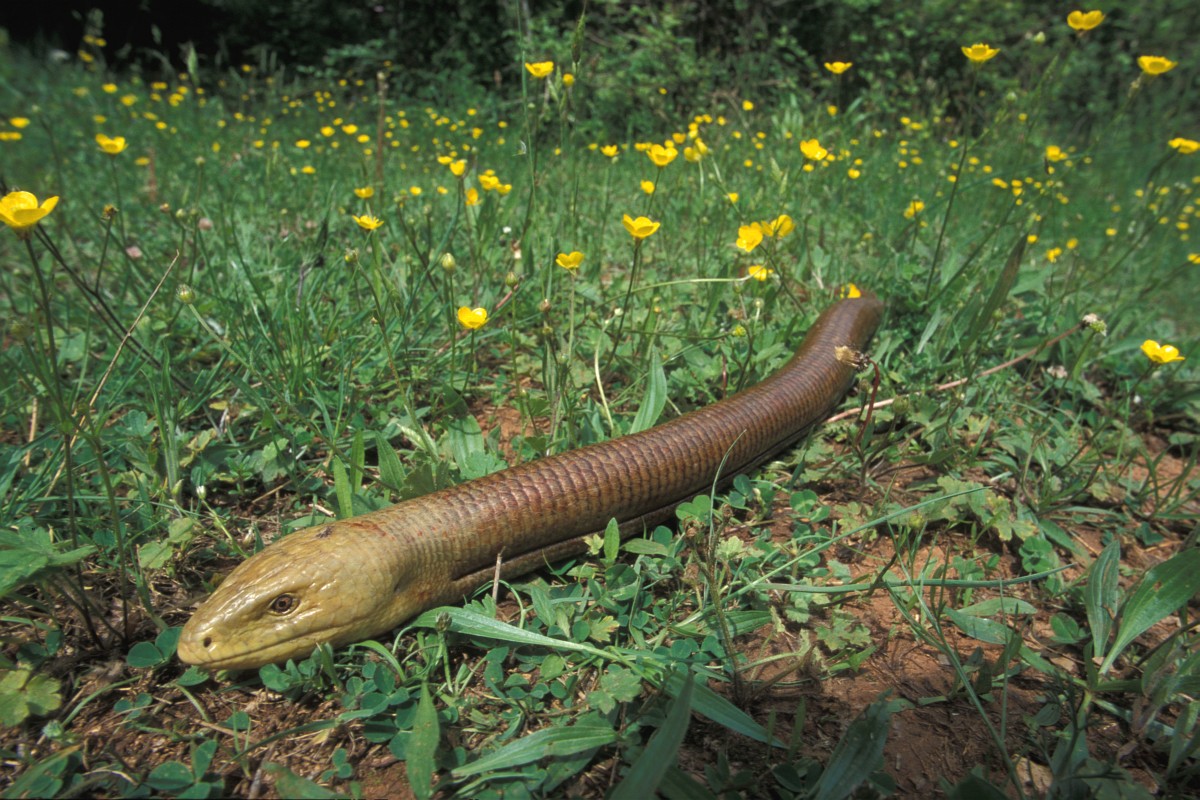The sheltopusik (Pseudopus apodus), also commonly called Pallas' glass lizard or the European legless lizard, is a species of large glass lizard found from southern Europe to Central Asia.
Description
The sheltopusik can reach a length of 135 cm (4.43 ft). It is tan colored, paler on the ventral surface and the head, with a ring-like/segmented appearance that makes it look like a giant earthworm with a distinctive fold of skin down each side called a lateral groove. Small (2 mm) rear legs are sometimes visible near the cloaca. Though the legs are barely discernible, the sheltopusik can be quickly distinguished from a snake by its ears, eyelids, and ventral scales.
Habitat and behaviour
Pseudopus apodus inhabits open country, such as short grassland or sparsely wooded hills. It consumes arthropods and small mammals. Snails and slugs appear to be its favorite prey, which may explain why it is particularly active in wet weather, although it prefers a dry habitat.
Defensive behaviour
Due to its size, the sheltopusik tends to respond to harassment by hissing, biting, and musking. It is less likely to drop off its tail than some other species that display caudal autotomy. However, these occasional displays of caudal autotomy are responsible for the name "glass lizard" (or "glass snake"). The released tail may break into pieces, leading to the myth that the lizard can shatter like glass and reassemble itself later. In reality, if the tail is lost, it grows back slowly, but is shorter and darker; it may grow back to full length as it grows.
In captivity
Sheltopusiks are frequently available in the exotic pet trade, though rarely captive-bred. They do not typically tolerate a large amount of handling, but they adapt to captivity well, feeding on crickets, meal worms, small mice, eggs, snails or pieces of meat which they even accept from a keeper´s tweezers, or even from the hands once they become used to captivity, however they do get excited around food and have surprisingly powerful jaws. They make hardy captives, capable of living up to 50 years.
Reproduction
About 10 weeks after mating, the female P. apodus lays about eight eggs which she hides under bark or a stone, and often guards them. The young hatch after 45 – 55 days. They average about 15 cm (5.9 in) long and usually start to eat after four days.


